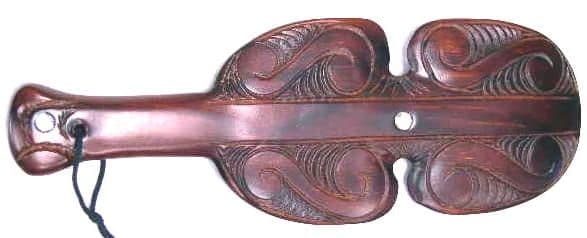08 Jun 2022

From a young age, Māori warriors would begin training for combat so they could build up the strength and skills to serve their tribe. Conflict between tribes was commonplace, and training in the use of weaponry was one of the most important skills a young warrior could learn.
Fighting was fierce, and warfare usually involved hand-to-hand combat. Using natural materials such as wood, whalebone and pounamu, Māori fashioned weapons for this type of conflict and always kept their treasured weapon close by.
In this blog, we explore the different types of weaponry used by Māori for close combat warfare and take a look at how we carve mere pounamu today.

For close hand-to-hand combat, Māori warriors were known to carry some of the following weapons into battle. In formal settings, a warrior would hold their weaponry in their right hand if they were proclaiming war or their left hand if their intentions were peaceful.
Simple in form and shape, the patu is a short club used as a striking weapon to hit the enemy's upper body, including mortal strikes to the head of the fallen, usually made of wood, whalebone or stone such as basalt.
Held in high esteem, the patu got passed down from generation to generation. This ageless practice would embellish the weapon with mana (power/prestige) - a spiritual or supernatural power derived from the former achievements of famous chiefs or warriors who wielded the patu. Future warriors would have a confident expectation of success if they wielded a weapon with such mana.
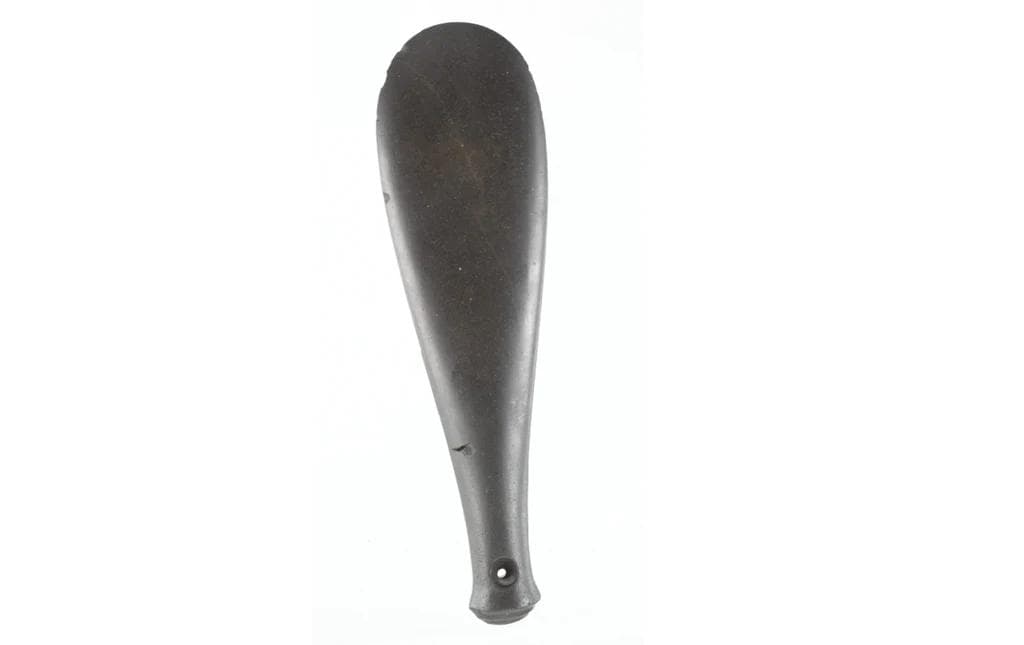
Similar in aesthetic and use to the patu, the mere pounamu is a one-handed weapon featuring a flat elongated blade with a sharp striking edge. A warrior would use it to strike the head, jaw, and ribs of their enemy. It was one of the most valued weapons to Māori, with the stone’s strength making it treasured even more so than gold.
On the Mohs hardness scale (a measure of mineral hardness), pounamu (nephrite jade) is a 6.5, with diamond, one of the world's hardest minerals, being a 10. For early Māori, it was a lengthy process to carve pounamu as fragments of the stone would need to be separated from large boulders by continuously rubbing an abrasive back and forth to create a grove that could snap.
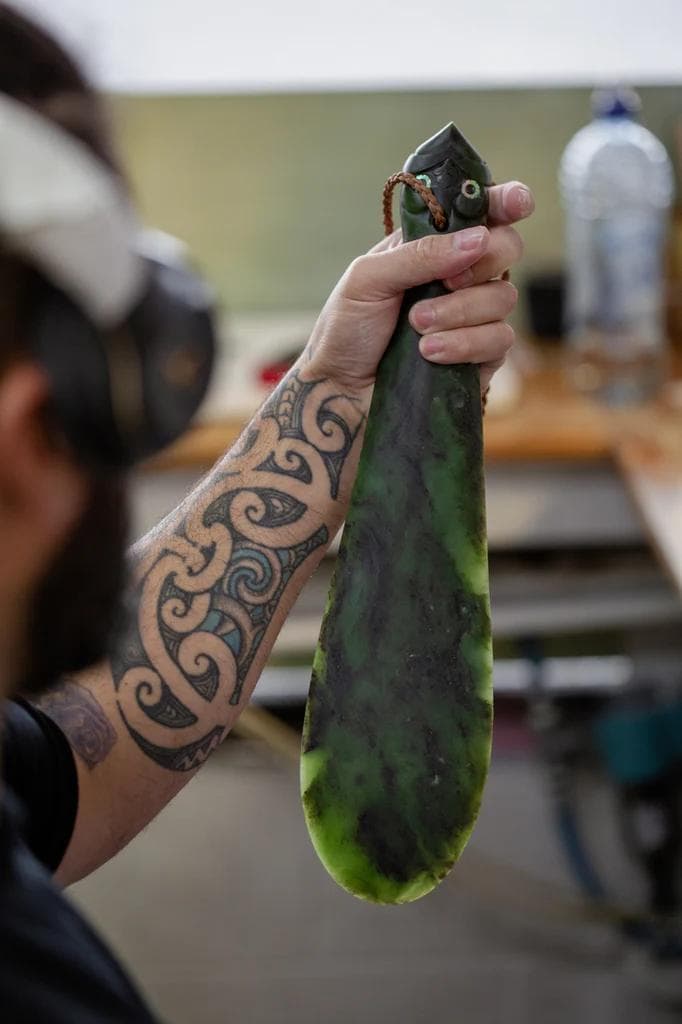
Due to the extreme length of craftsmanship, mere pounamu were highly treasured weapons and the possessions of chiefs and nobility, acting as a symbol of rank. Some were so highly valued that they were given names, and the stories of their possessors were handed down from generation to generation.
Today, we use the diamond-tipped machines and tools in our studio to cut through slabs of stone and create mere pounamu with more ease. However, it is still a timely process, with artists needing to carefully select, cut, grind and sand the stone.
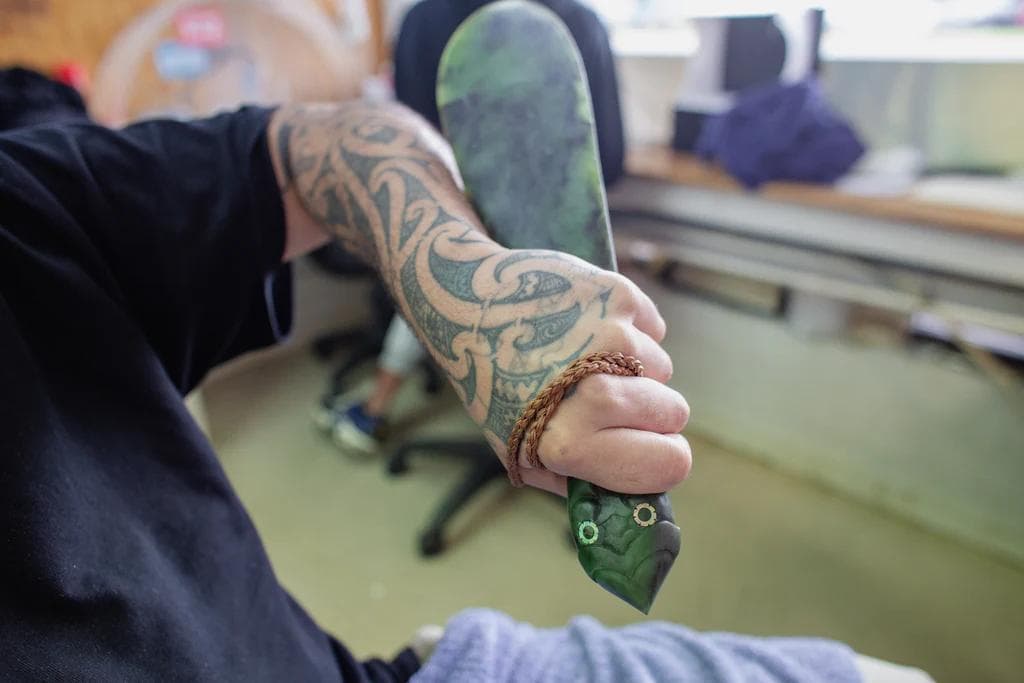
Other Māori weaponry used in close hand-to-hand combat included the Wahaika, a short club weapon usually made of whalebone or wood. The warrior would thrust the wahaika into the body of their enemy, and since the wahaika has a sharp edge, much harm could be done. An notch on the side of the Wahaiki was used for catching the opponents weapon and disarming them.
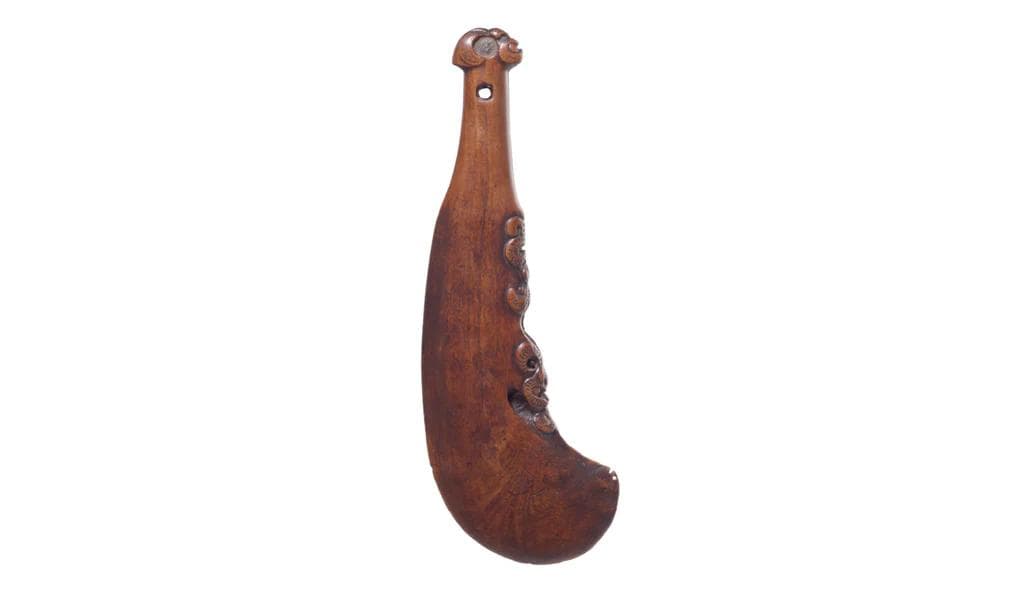
The kotiate was a prized weapon and also favoured by chiefs when speech-making. Usually made of whalebone or wood, the curiously shaped weapon was used in a ripping action, with the word kotiate translating to "divide, split in two".
